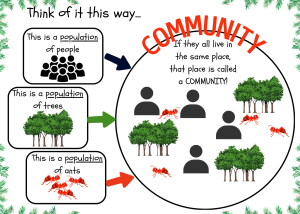Imagine your students taking notes and drowning in a sea of words. When reviewing it’s a struggle to fish out the key points from a sea of information. Introducing the highlighting and color coding note taking method!
Color can be a powerful tool for memory retention. (Note: It was a key part of mind mapping.) Using different colors for headings, main ideas, and supporting details helps when students revisit notes. The visual cues help them quickly locate important information. However, it’s important that they not go overboard – a rainbow of colors won’t help if it’s too distracting!
What are some note taking advantages of the highlighting and color coding method:
1. Instant Focus Boost:
Highlighting allows you to spot the essential info at a glance. It’s like creating a neon sign that says, “Hey, this is important!” You’ll be amazed at how their brains perk up when they encounter those pops of color.
2. Organization Nirvana:
Color coding takes things up a notch. Assign each color to a specific category or theme – blue for dates, green for definitions, and so on. Voila! Your note taking method has transformed into an organized masterpiece. This makes reviewing a breeze.
3. Memory Magic:
Ever notice how certain colors spark memories? By associating information with specific hues, they’re tapping into their brain’s natural ability to link visuals with knowledge. Say hello to remembering facts effortlessly!
4. Stress-Buster:
Staring at a wall of text can be overwhelming. But with student notes displayed in a spectrum of colors, suddenly, it’s not so intimidating. It’s like turning a dull black-and-white movie into a technicolor adventure! Just remember, they shouldn’t go overboard with colors.
5. Personal Touch:
Notes reflect the student! Injecting their personality into color choices not only makes studying easier, but more enjoyable. It’s like adding a dash of your flavor to the learning mix.
In sum, note taking using the highlighting and coloring method isn’t about making student notes look pretty. It’s a powerful strategy to enhance their learning experience.
What are some disadvantages of this note taking method?
1- Too much color is distracting:
Students can get lost in all of the colors. Think about coming back to your science notes after a day of classes. You might stare at the colored page and wonder what it all means. “Now, what does red mean?” “Why did we highlight this section in yellow?” etc etc
2- Without a color scheme you sacrifice the intended purpose:
If students color and don’t have a means of relating colors, they’ve lost the true intent. “Red is for definitions and blue is for key concepts…” Without a color key, students can get lost in the “sea of colors”. The exercise can become coloring for coloring’s sake. No teacher wants that.
3- This note taking method may not suit certain learning styles:
Auditory learners may learn best by rehearsing. They might read notes to themselves or have someone read the notes to them. The color scheme would be inconsequential.
Kinesthetic learners may study best by having portions of notes on cards or sticky notes. Being able to rearrange and organize the pieces is a way that makes sense to them.
4- Making Corrections:
Correcting notes can be a hassle. Imagine being a student and you have taken all of these notes and used colors to identify the key parts. But, you realize that you used the wrong colors. Maybe, you need to change the notes for them to make more sense. Do you rewrite your notes? “I have to redo these notes?! Uggh.”
Conclusion
In conclusion, the method using highlighting and color coding in note taking is surely a powerful strategy. With it, a student can transform the often overwhelming sea of notes into a clear, organized work of art. By using different colors purposefully, students create a visual roadmap. This will increase focus and enhance memory retention. The advantages of focus boosting, organization, memory enrichment, stress reduction, and a personal touch, make note-taking a breeze and contribute to an enjoyable learning experience.
However, it’s important to acknowledge the potential disadvantages associated with this note taking method. Too much color can become distracting, leading to confusion and hindering effective review. Without a clear color scheme, the intended purpose of the highlighting and color coding can be lost. Resulting in reduced effectiveness. Additionally, the method may not suit all learning styles. Auditory or kinesthetic learners may find alternative approaches more helpful. Making corrections to notes can prove challenging. When color choices need adjustment, it can prove to be a challenging task.
Highlighting and color coding offer significant benefits to students. However, a thoughtful and balanced approach is necessary to expand note-taking effectiveness in any learning environment.







